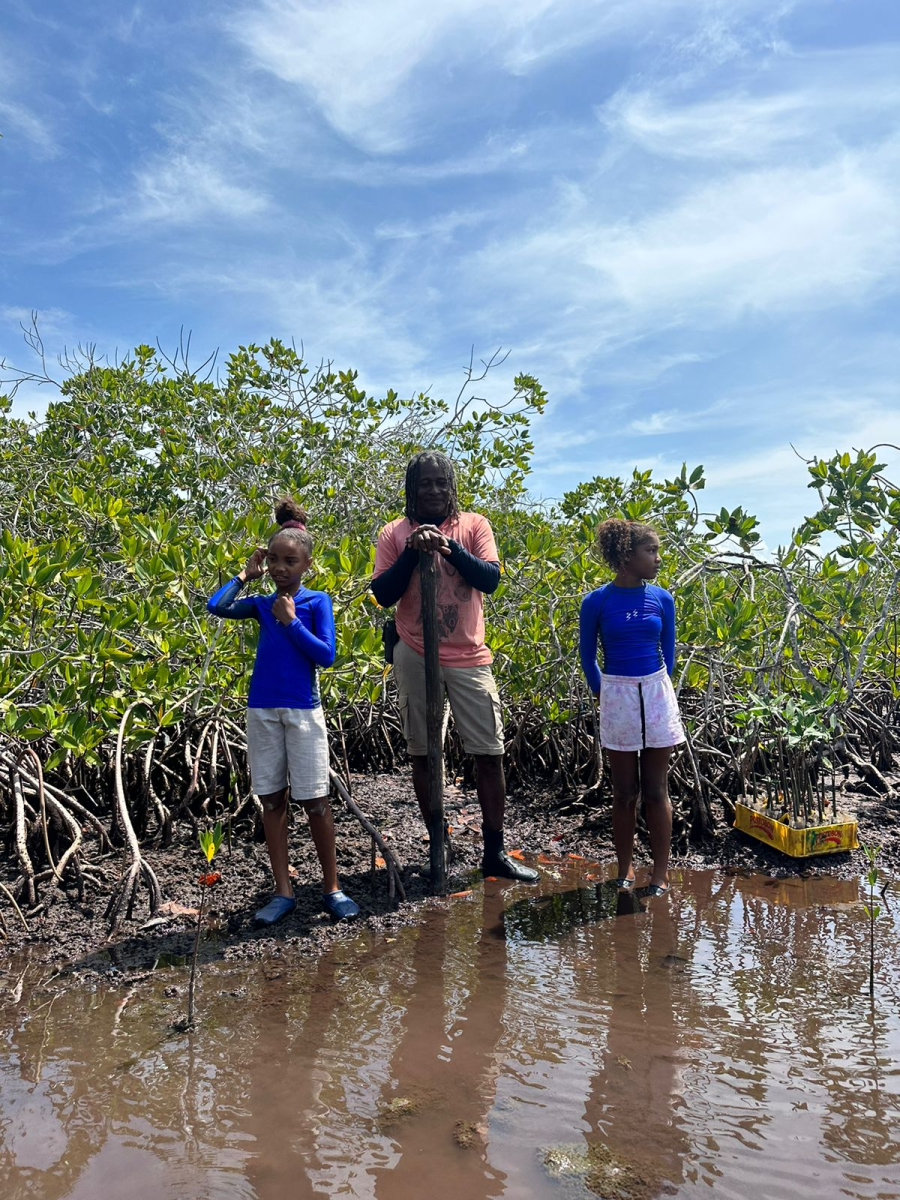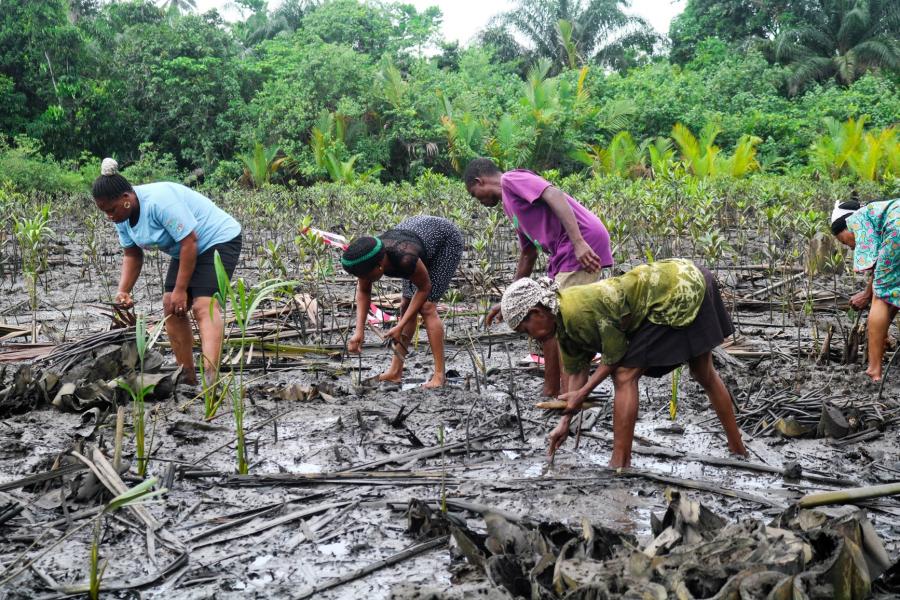


T he United Nations Framework Convention on Climate Change (UNFCCC) has evolved into one of the most significant annual sessions of international affairs for Indigenous Peoples to shape the agenda, speak out for rights, and secure specific language in the adopted agreements. While the ink on the Paris Agreement is still drying, it is imperative to understand the international climate change institution and begin preparing for Marrakesh in November 2016.
Over the decades, Indigenous Peoples have increased their input in international negotiations, sharing the traditional knowledge and necessary actions the world must collectively take to avoid catastrophic conditions for Indigenous communities. Indigenous Peoples’ contribution improved the Cancun Agreements, as well as the Durban Outcomes and Doha Climate Gateway. In the Warsaw Outcomes and most recently the Paris Agreement, the Indigenous voice has been valued in order to protect our common home—Mother Earth.
Scope of Work
Today, the 196 parties to the UNFCCC meet annually at the Conference of Parties (COP) in host countries usually in November/December. In between the annual sessions that generate global attention, there are crucial conferences to attend that follow up on agreements and draft text to be adopted at upcoming conferences. Bonn, Germany hosts the many meetings between February and the next COP. The main meeting to prepare for and participate in for the upcoming COP is in May. If warranted, there is usually one session in the fall prior to the COP to bracket text on documents being negotiated by nations.
Indigenous Peoples can attend committees and mechanisms based on the focus of their advocacy. There are committees meeting on adaptation, finance, as well as loss and damages. There are mechanisms focusing on technology and finance, with main funds such as the Global Environmental Facility and Green Climate Fund as well as a Special Climate Change Fund, Least Developed Countries Fund, and Adaptation Fund. Upon participation in the annual COP, one can assess which committees and mechanisms are significant to one’s advocacy relating to climate change.
Getting Organized
Prior to the COP, it is imperative to host community conversations in one’s own homeland to provide accurate information about the process and potential results. Community conversations allow one to field priorities and forge consensus on positions that should be raised at the upcoming COP. It is also excellent to propose a followup community conversation after the COP and agree on potential dates to promote accountability and propose specific actions to implement the international agreement through local initiatives.
There are a couple of options to organize immediately prior to the COP. Preparatory meetings are planned based on geography and major constituency groups. Regional meetings prior to the COP allow activists and advocates to discuss and determine common positions. Also, major groups representing the environment, farming and agriculture, Indigenous Peoples, business and industry, labor unions, local governments and municipal authorities, academic institutions, and women and youth gather from all over the world to set strategies and prioritize specific subjects at the global gathering. It is important to develop positions on proposed text and to draft language and determine a strategy to demand inclusion at the COP negotiations.
Preparation is significant to be able to share one’s story and state specific results one aims to accomplish by attending and actively participating in the COP. The latest copy of the text being negotiated should be read and fully understood. One can also draft potential amendments beginning with desired language to accomplish aims and bottom lines to not fall below. Creating a social media strategy is also beneficial to amplify one’s message during the climate summit.
On the Ground
The COP is the heart of Indigenous Peoples’ engagement at the UNFCCC. It is where the world meets and one can connect with other communities facing similar situations. Bring a bundle of brochures and cultural tourist treasures bearing a message of protecting the planet with contact information to connect after the conference. It is essential to bring printed materials to distribute.
The two-week sessions are nonstop negotiations and a network of nations and NGOs coming together on the world stage. Be ready to be in one building before the sun rises and way after it sets. Every day begins early in the main negotiation area with multiple caucus meetings divided into regions and thematic topics. One might be moving between a couple every day, receiving briefings from leadership providing updates and urgent tasks. Then there are the main sessions with the delegations declaring their position and proposing specific amendments to the bracketed text. Every evening it is imperative to meet again in multiple caucuses to connect and coordinate actions to be ready for the continued negotiation until the COP concludes.
There is always an official civil society space connected to the main Conference. Sometimes it is closer to the venue and the voices can be heard by decision makers. There are many events to engage in around environmental justice. There are always panel presentations, film screenings, and fully equipped booths with televisions to view inside the negotiations. The civil society space offers a great place to partner with other movements protecting the planet. Many projects are born out of the optimal organizing in the parallel civil society process.
There are many more opportunities for organizing geared around genuine philosophy and practices believed to provide best practices that can benefit our planet and people. The Cities and Regions Pavilion brings together elected officials responsible to govern at the closest level. Mayors, municipal officers, and governors are the major participants, with plenty of opportunities for community organizers to discuss the future of sustainable development. The philosophy at this pavilion is local communities and municipalities are where daily living practices will be transformed; to truly think global and act local.
Development and Climate Days is a two-day annual event held at every COP since 2008. The informal space brings together development practitioners to share strategic actions through plenary and parallel sessions featuring themes of radical adaptation, disruptive social change, sustainable development, and food security. It is a must to attend for development communities to address new approaches in adaptation. This event engages everyday practitioners with policymakers promoting sensible and sensitive solutions tackling the climate crisis at its core.
Global Landscapes Forum is an excellent exchange of environmental information, with over 40 sessions covering topics in specific thematic areas developed prior to the COP. It usually happens for a couple days and includes many informal dialogues facilitated by civil society on imminent issues in international affairs. There are also hundreds of NGOs and UN agencies, programs, and funds sharing latest knowledge with ample documents to acquire.
Solutions COP is a corporations-based approach providing big business with a chance to sell humanity on market and technology driven international initiatives. It is worth spending a day wandering among the booths and speaking directly to corporate representatives, asking common concerns about business-as-usual models.
The People’s Climate Summit brings together faith associations, labor unions, and human rights NGOs in international solidarity to show another world is possible through social activism. The Summit offers alternative voices and a viable direction for sustainable development through exchanges in debates, workshops, documentary screenings, and living models of climate centered advocacy.
ArtCOP is a global festival of cultural activity on climate change bringing together artists, activists, authors, advocates, and analysts to exchange experiences. There are visual arts and exhibitions including musical performance and literature readings with events for the family to join the global discussion on the future of our common home. Action is the core principle for ArtCOP.
The Equator Prize has become the Academy Awards for activists where communities are applauded for their adaptation activities. Here, Hollywood meets human rights, as ingenuity is rewarded with recognition and grants to guarantee the planet is saved, village by village, through the vision of the people living on the frontier of the climate crisis.
The civil disobedience is one of the most exhilarating experiences at COPs, with NGOs and people’s movements engaging in campaigns that illustrate the main issue through symbolic protests. It is great to propose an action and watch humanity generate support that results in civil resistance that actually defends human and environmental rights.
Connecting Virtually
If one isn’t able to attend in person, it is possible to participate virtually via social media. The live webcast allows one to watch the speeches and follow the main actors in the actual sessions. The live press conferences are also valuable to watch. One can also follow Facebook, Twitter, YouTube, Vimeo, SoundCloud, LinkedIn and Flickr of the UNFCCC, and also major players from Executive Secretary Christiana Figueres, to the powerful civil society players.
The final action of the annual COP is to host a community conversation following the Conference where one can report back and explain all the media headlines seen on television and in newspapers to community members. Also, it is essential to develop community responses and organize opportunities to utilize the results for the benefit of the community. COP 22 in Marrakesh, Morocco is less than a year away. Now is the time to create a campaign to engage in the many parts of the COP process to ensure Indigenous Peoples’ rights and our Mother Earth is a core component of the annual global gathering.
—Joshua Cooper is a professor at the University of Hawai’i, West Oahu, Kapolei and director of the Hawai’i Institute for Human Rights.



